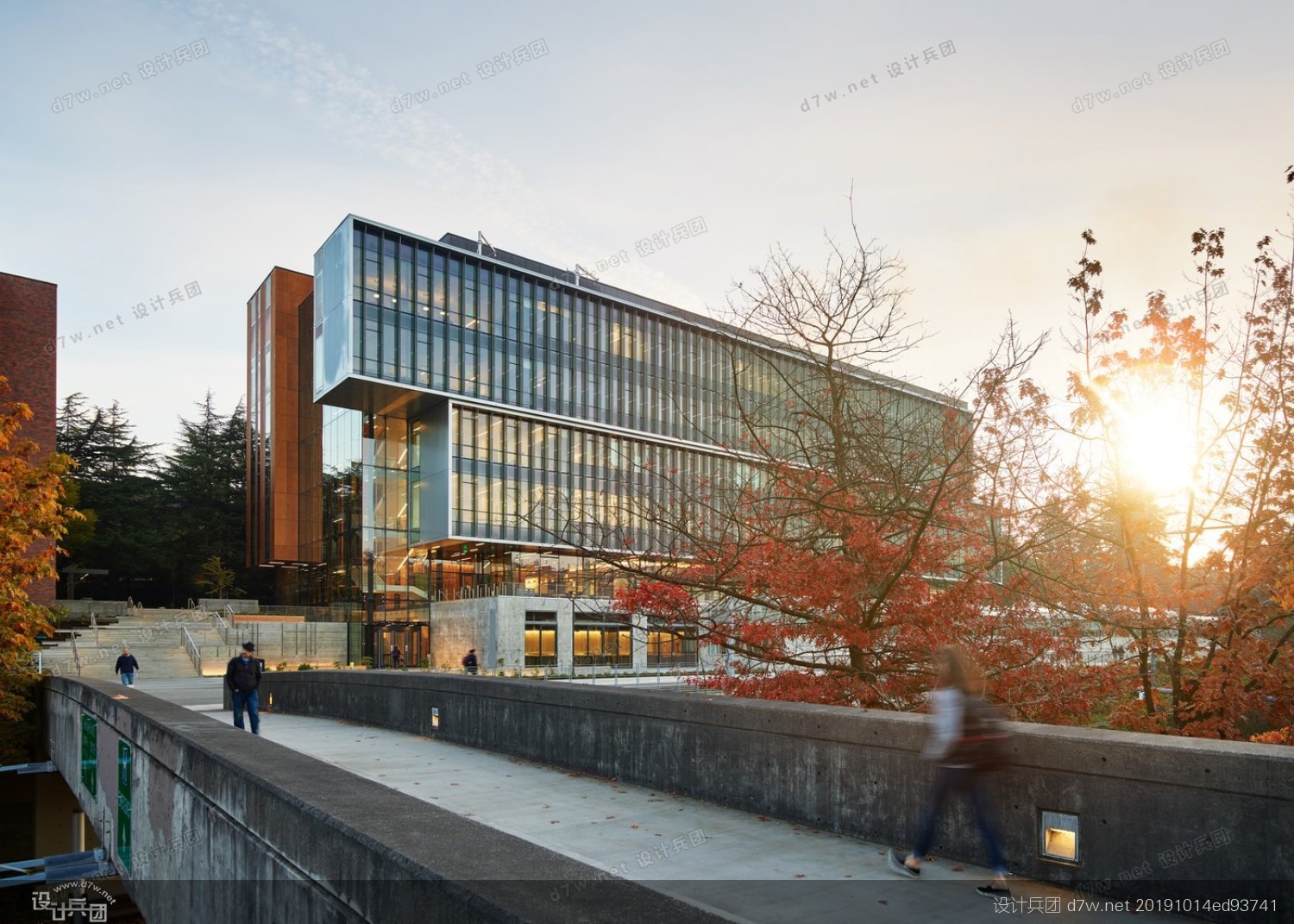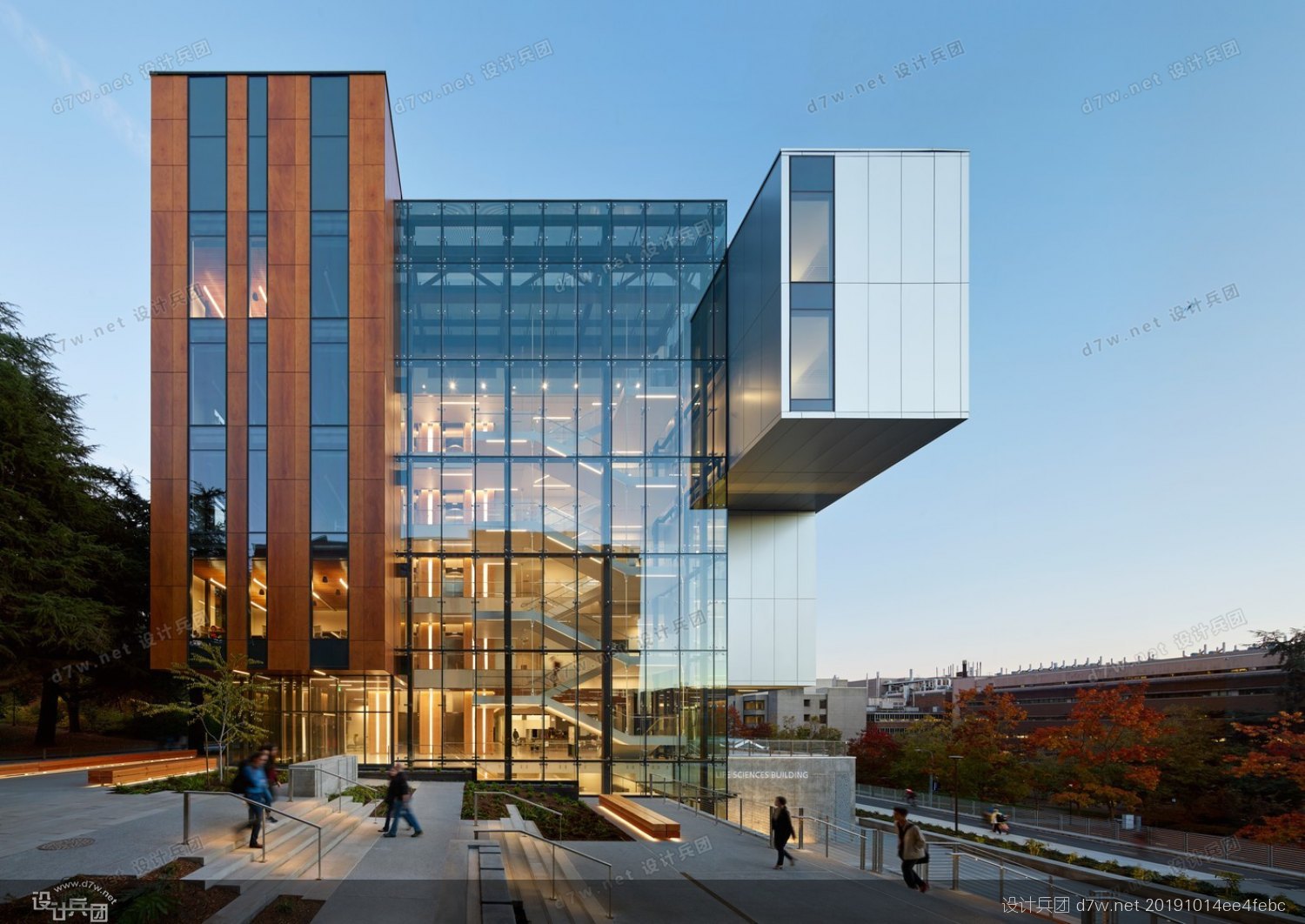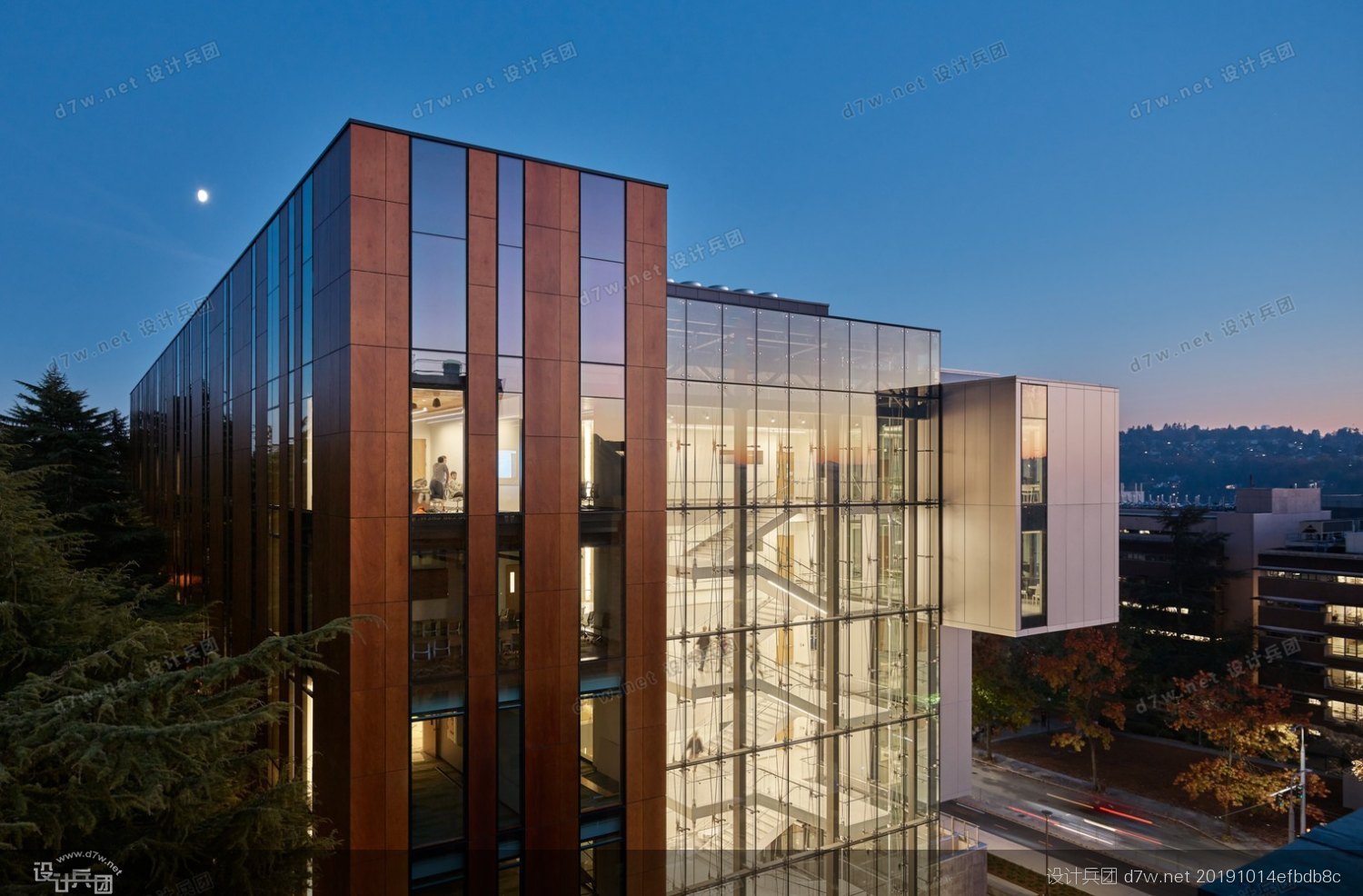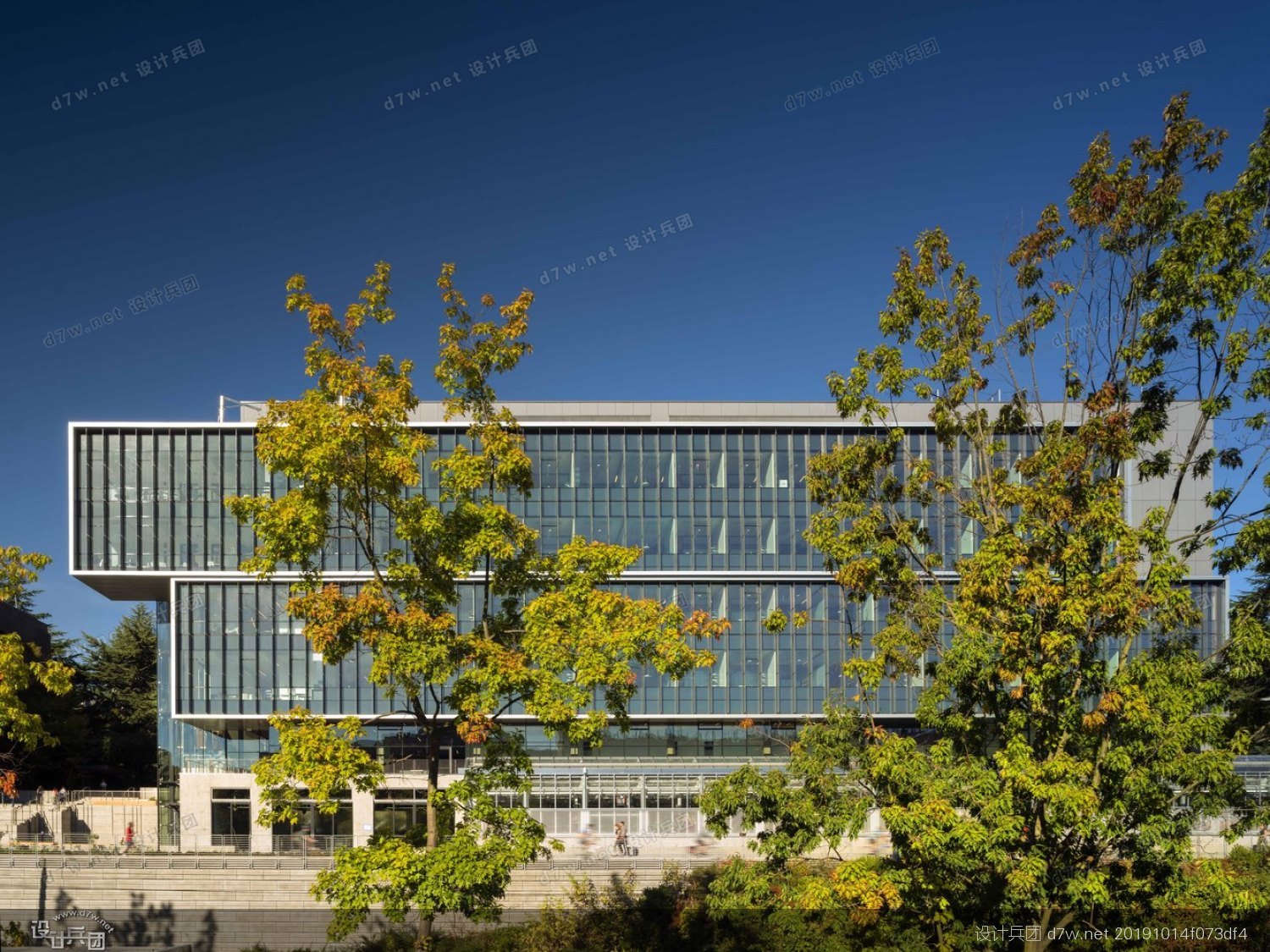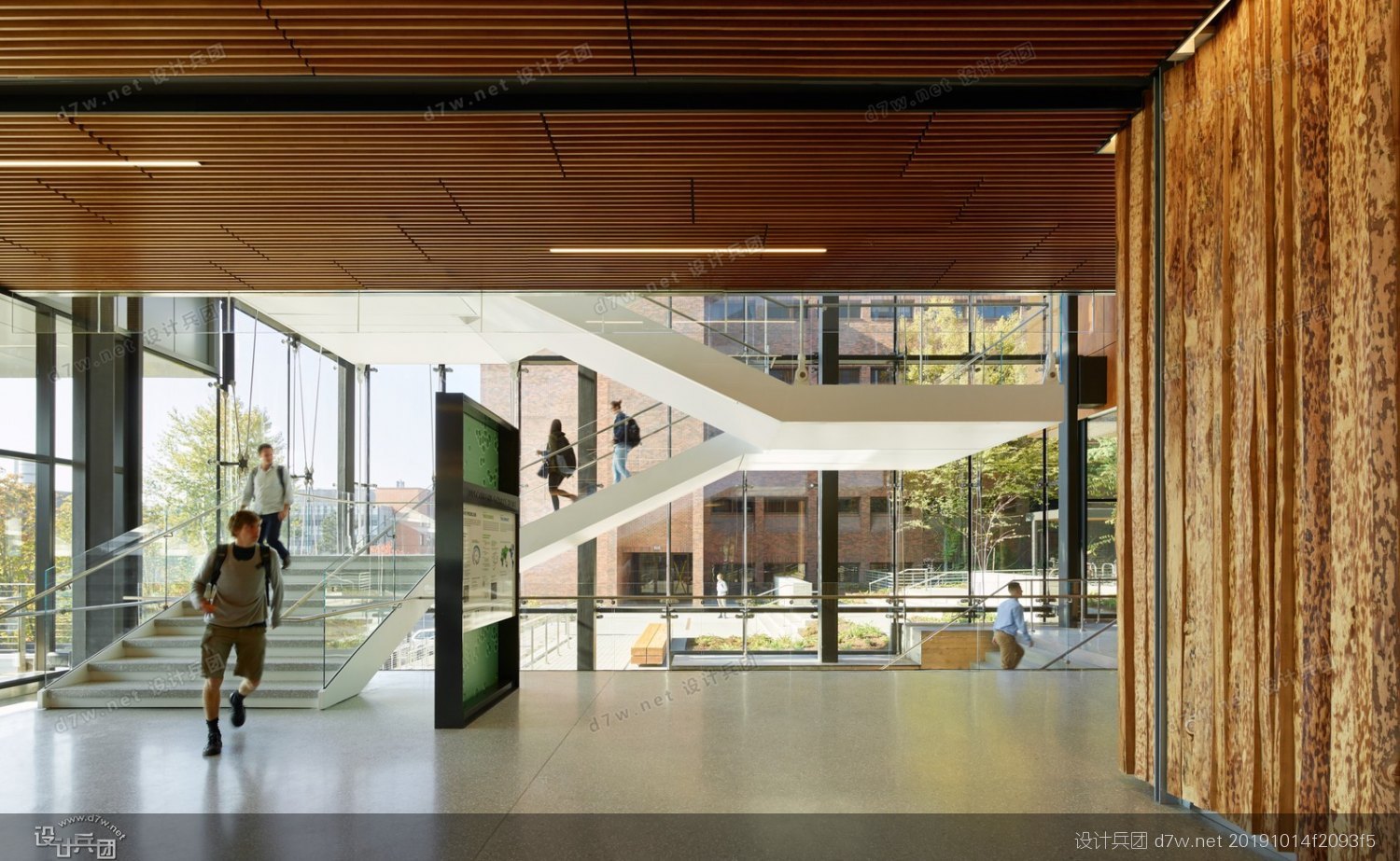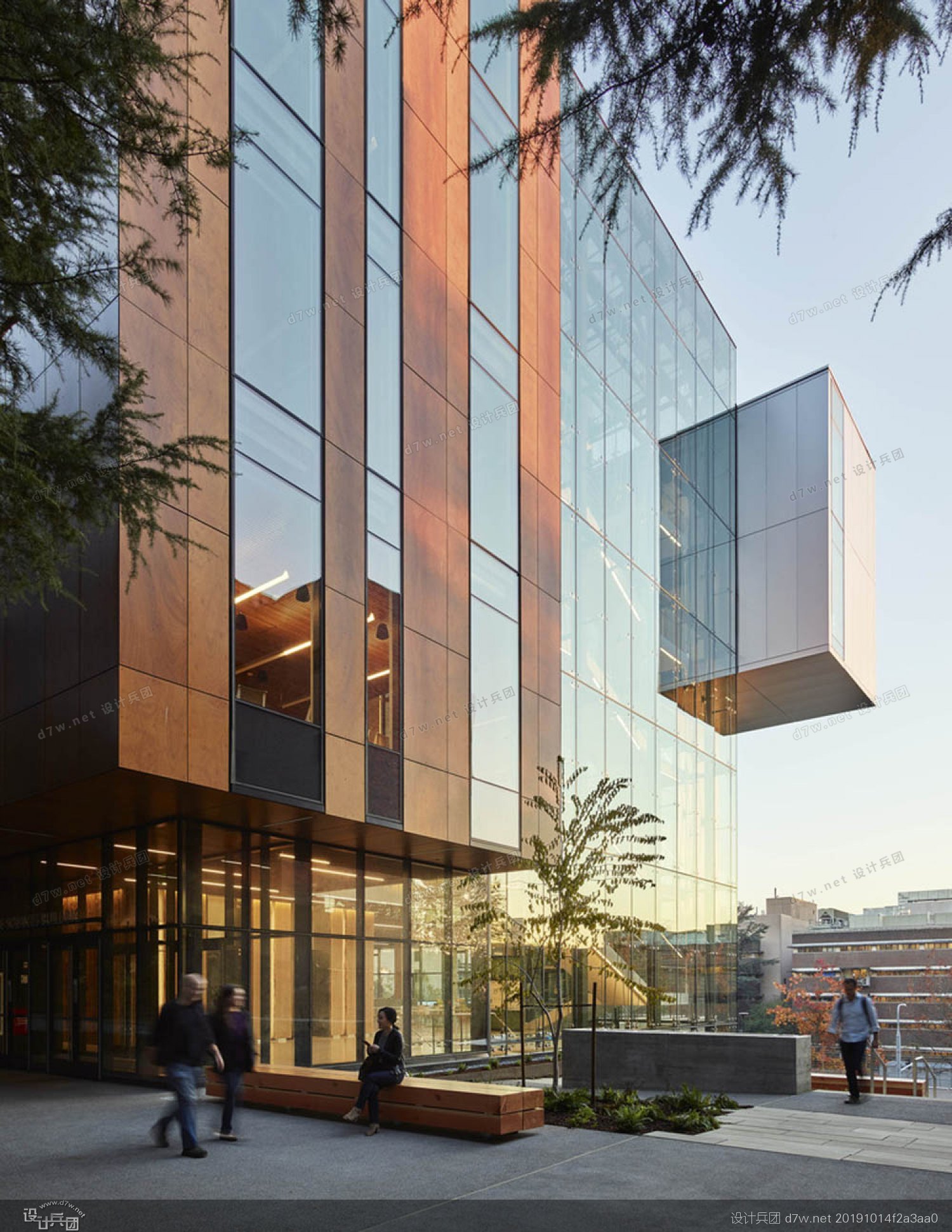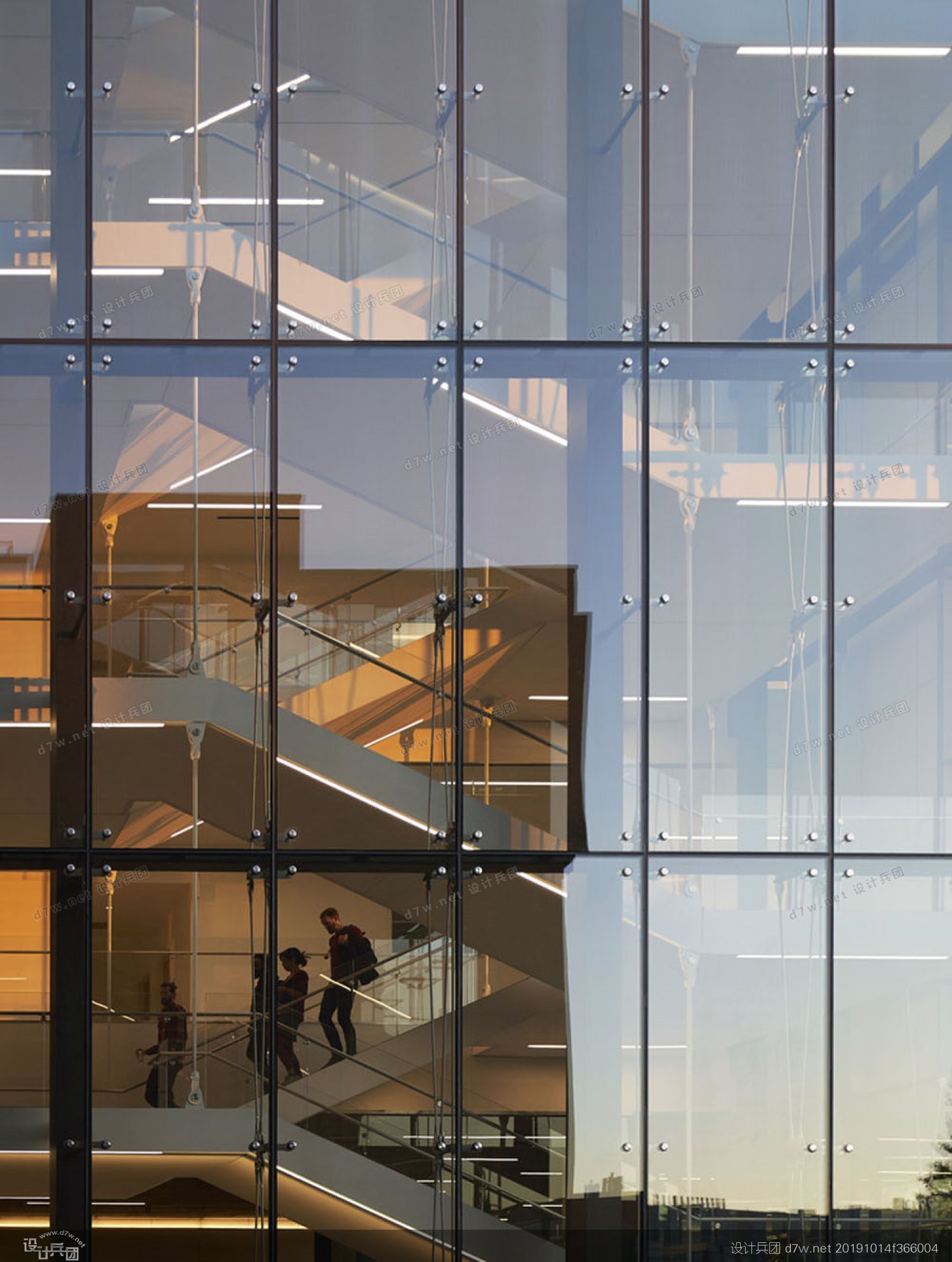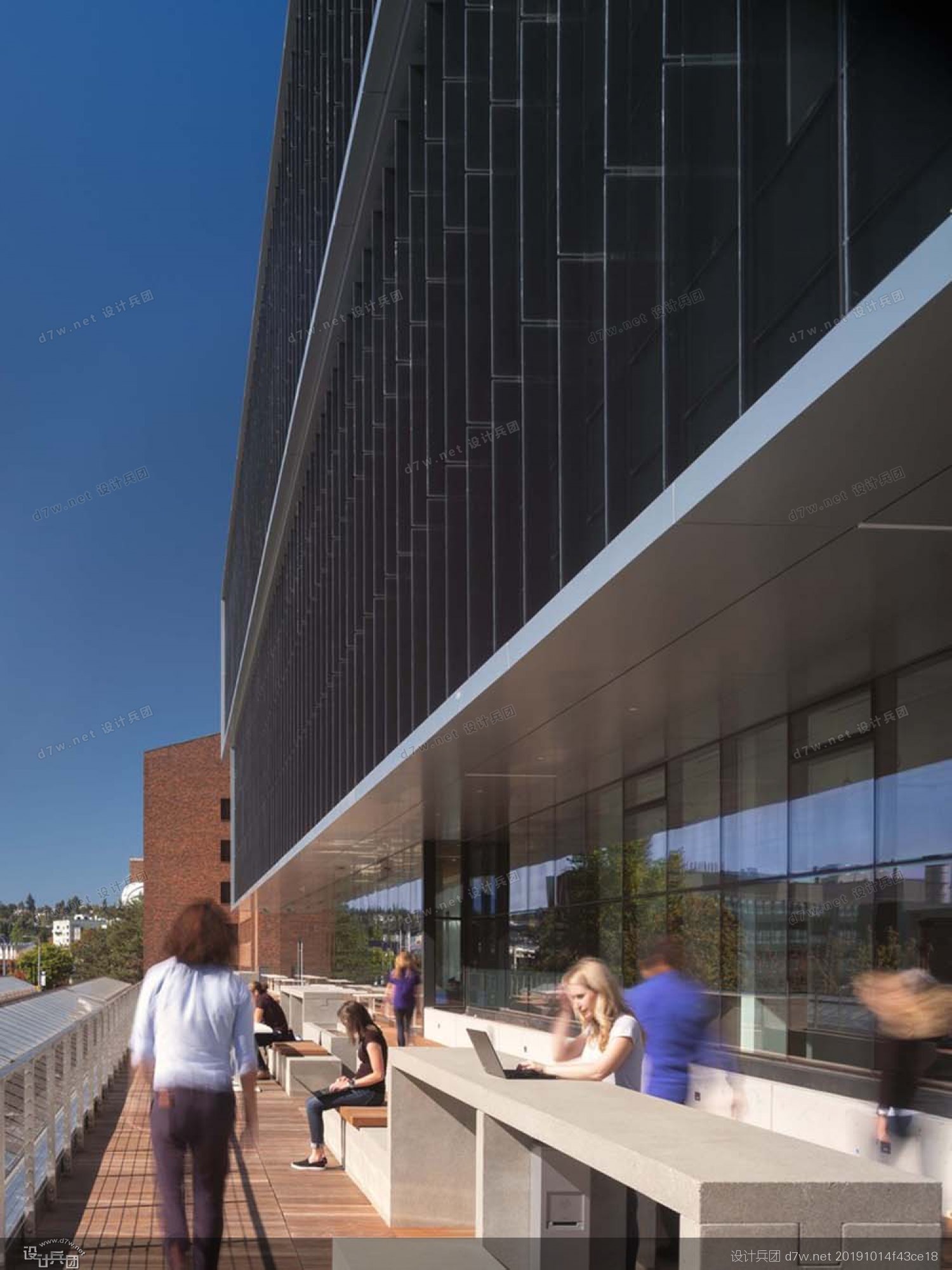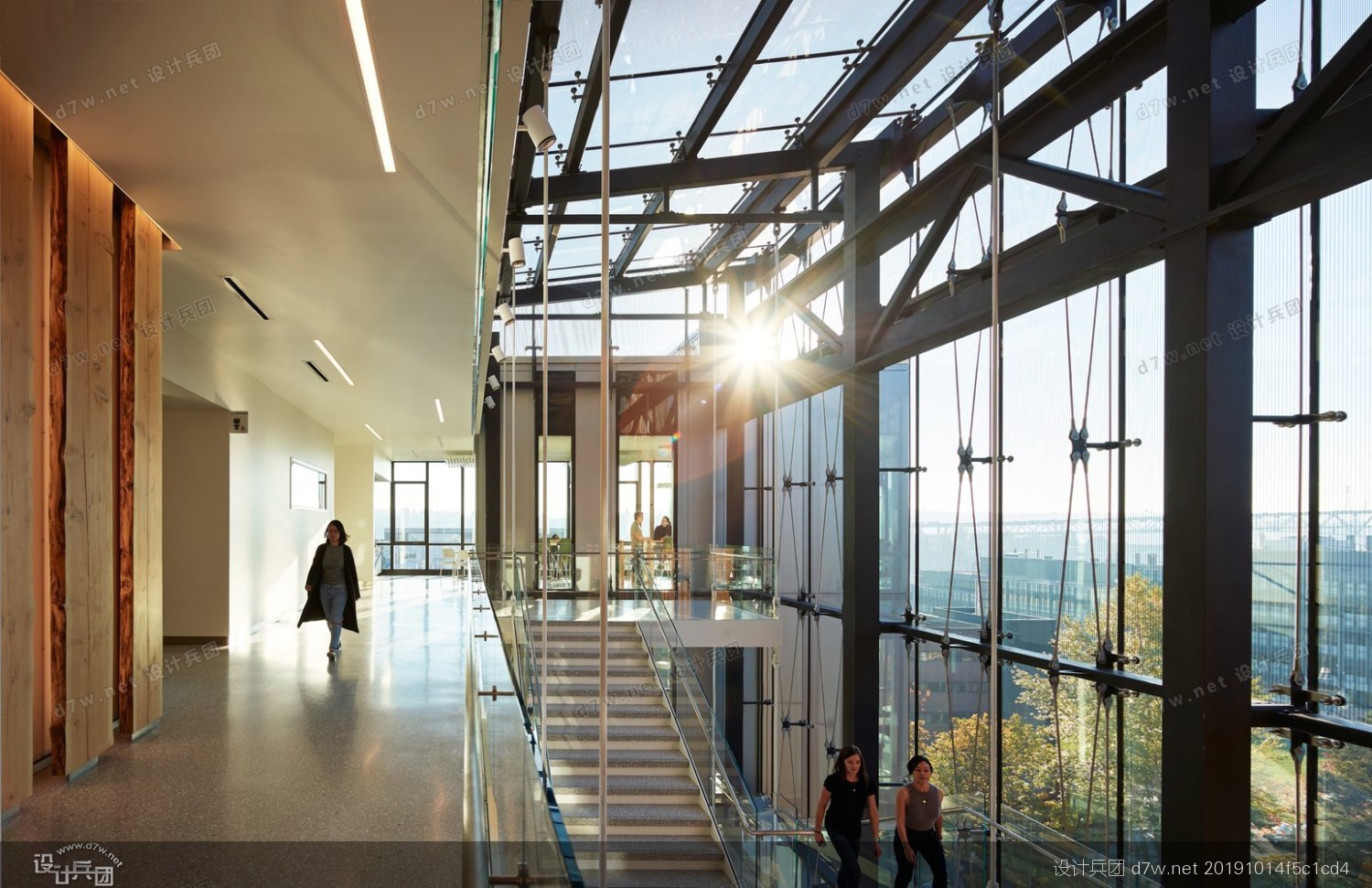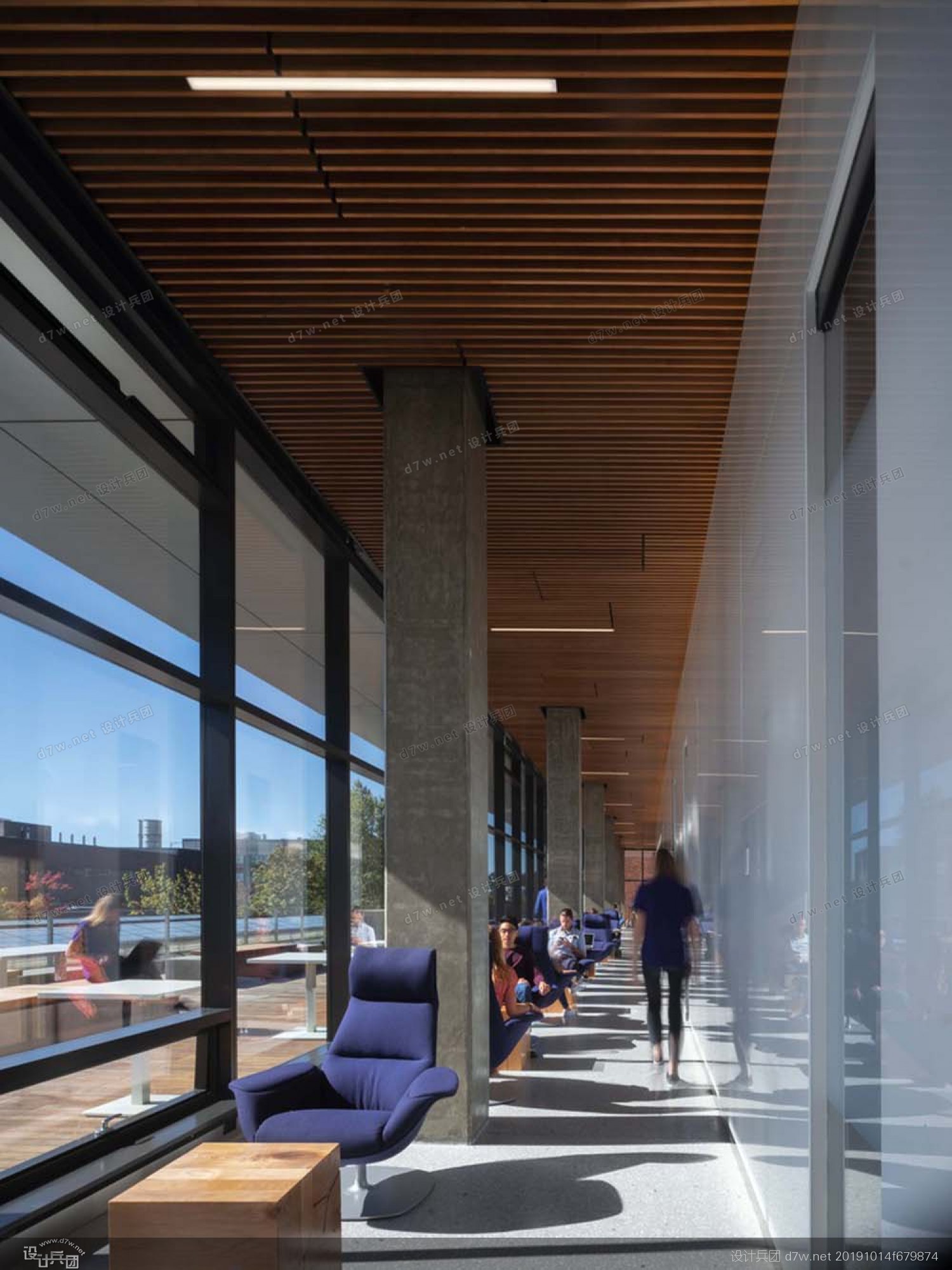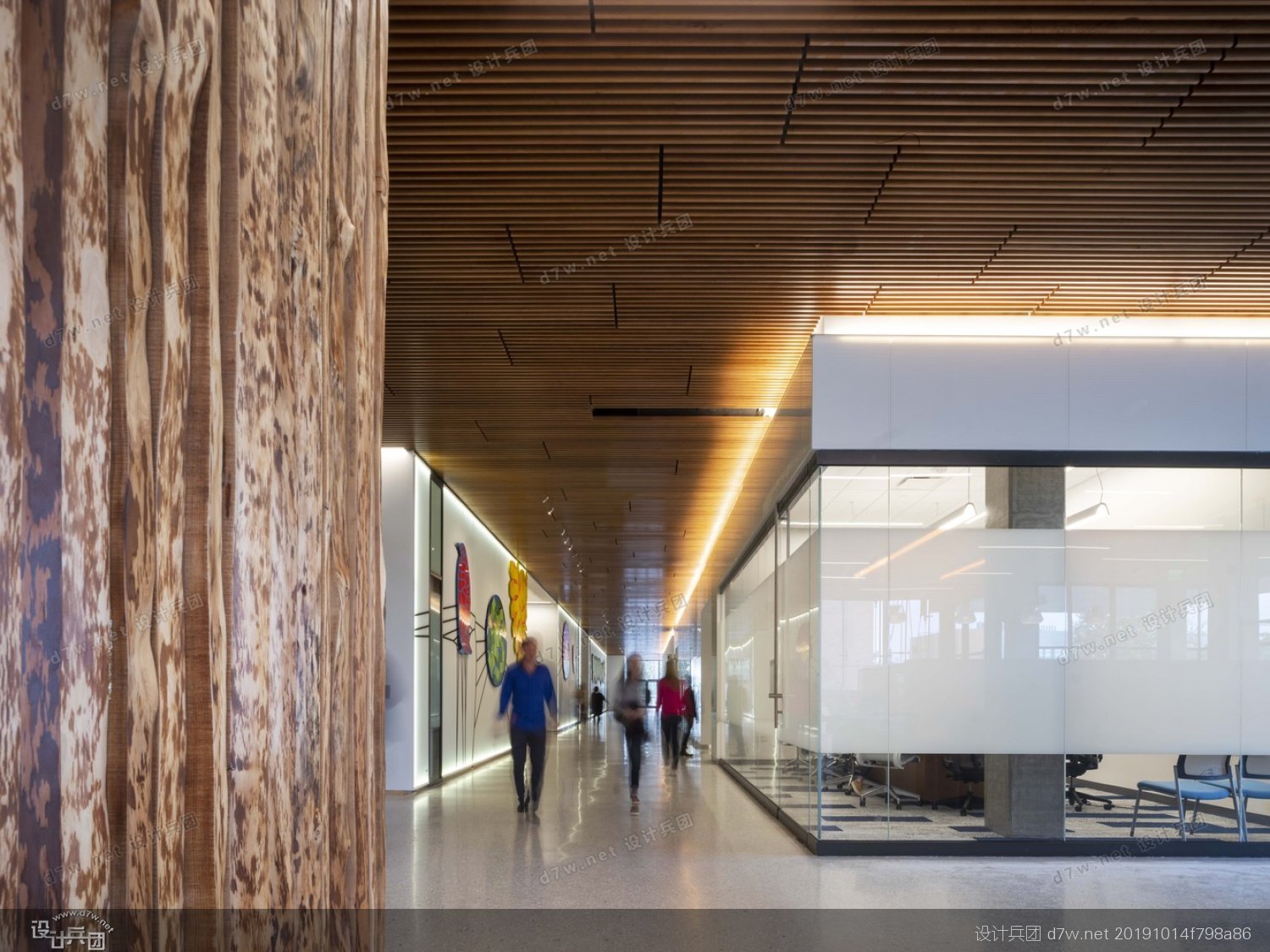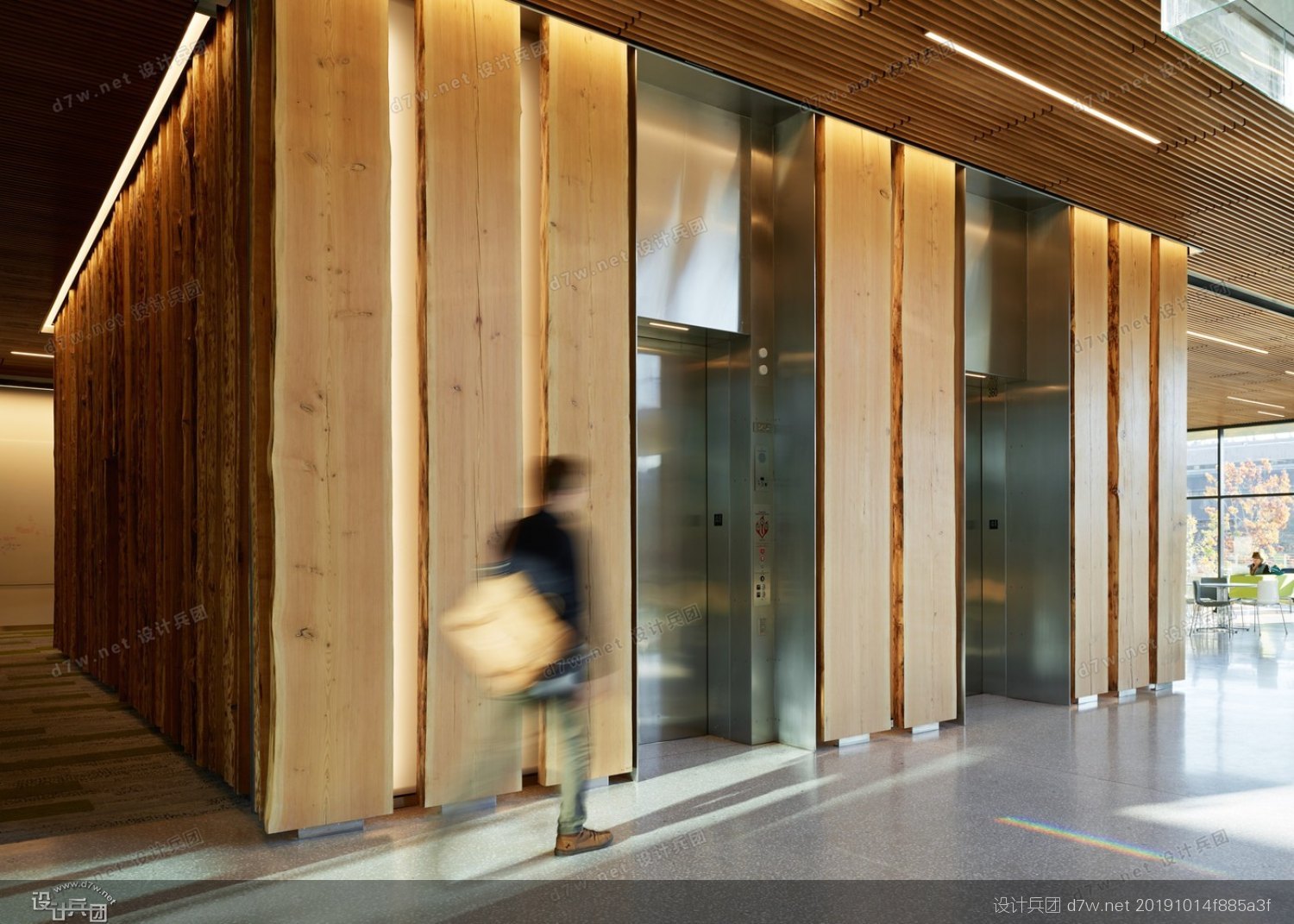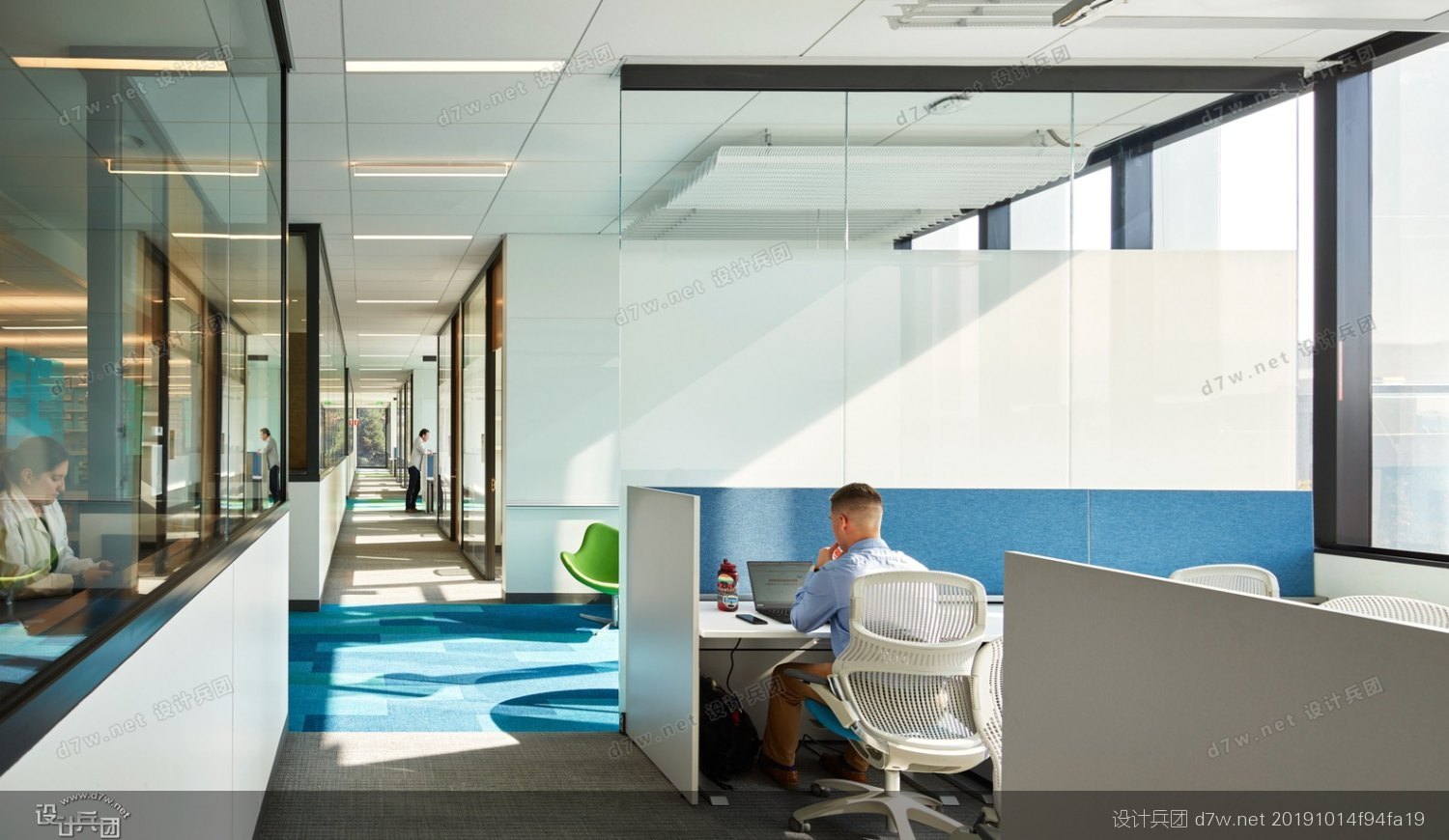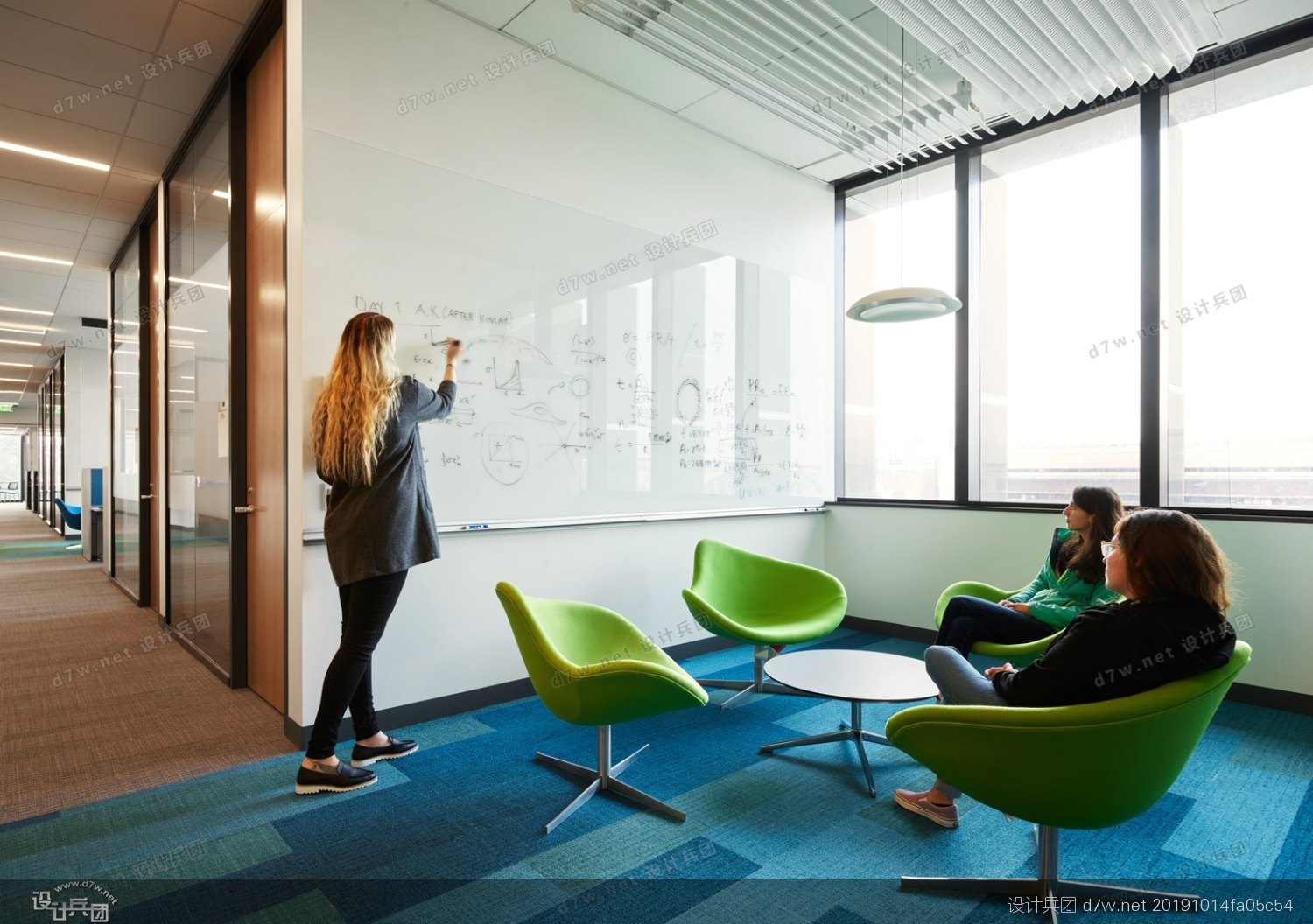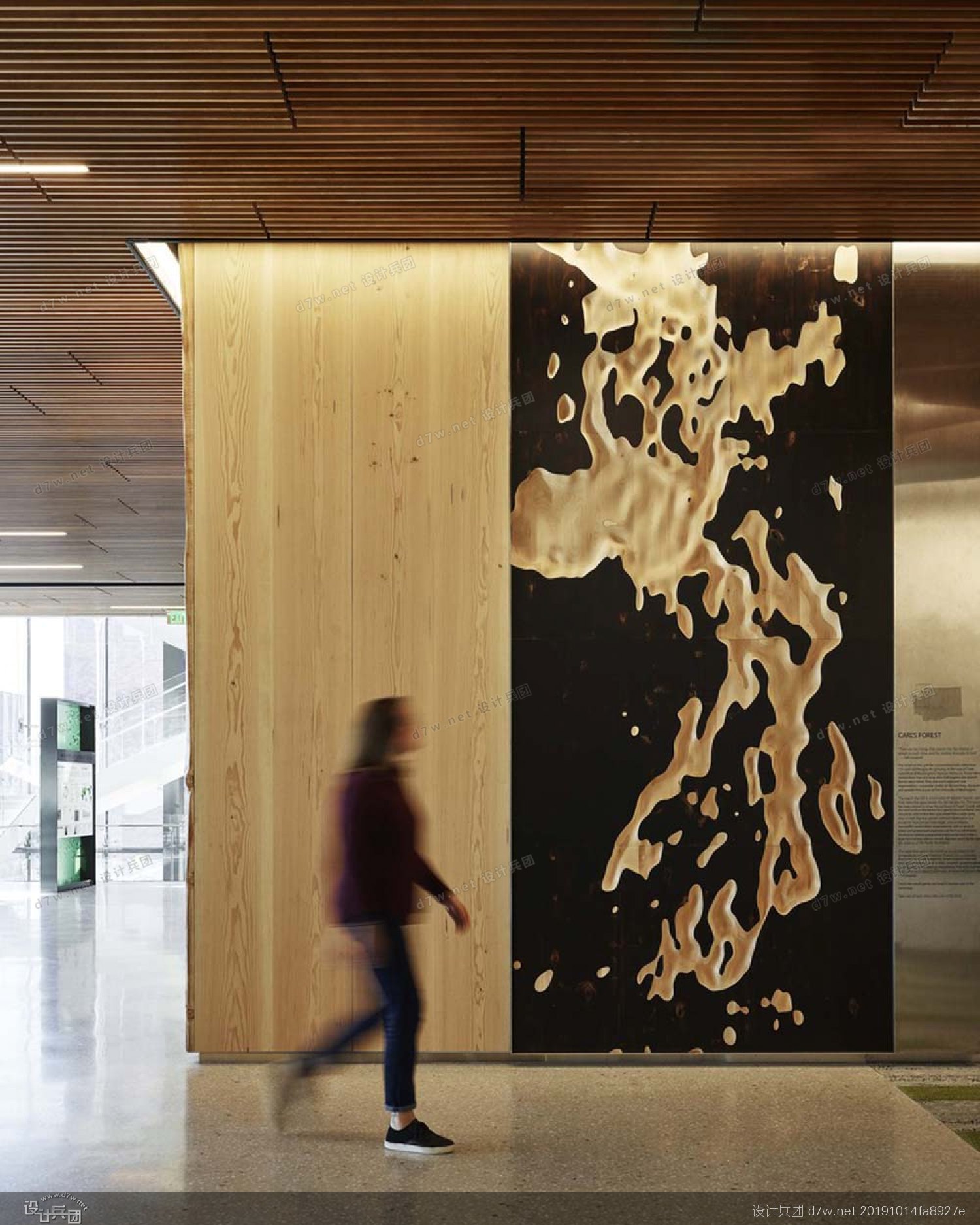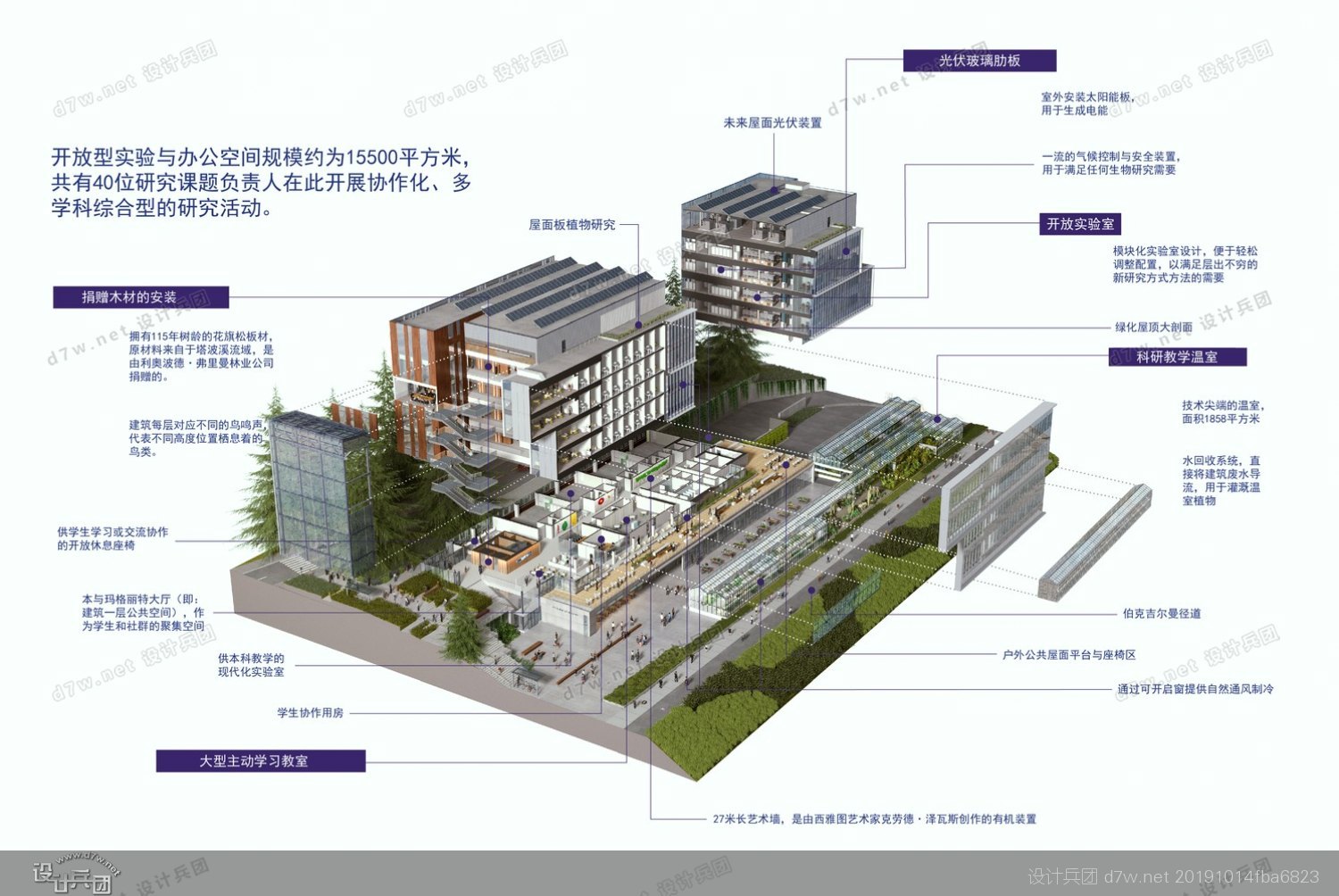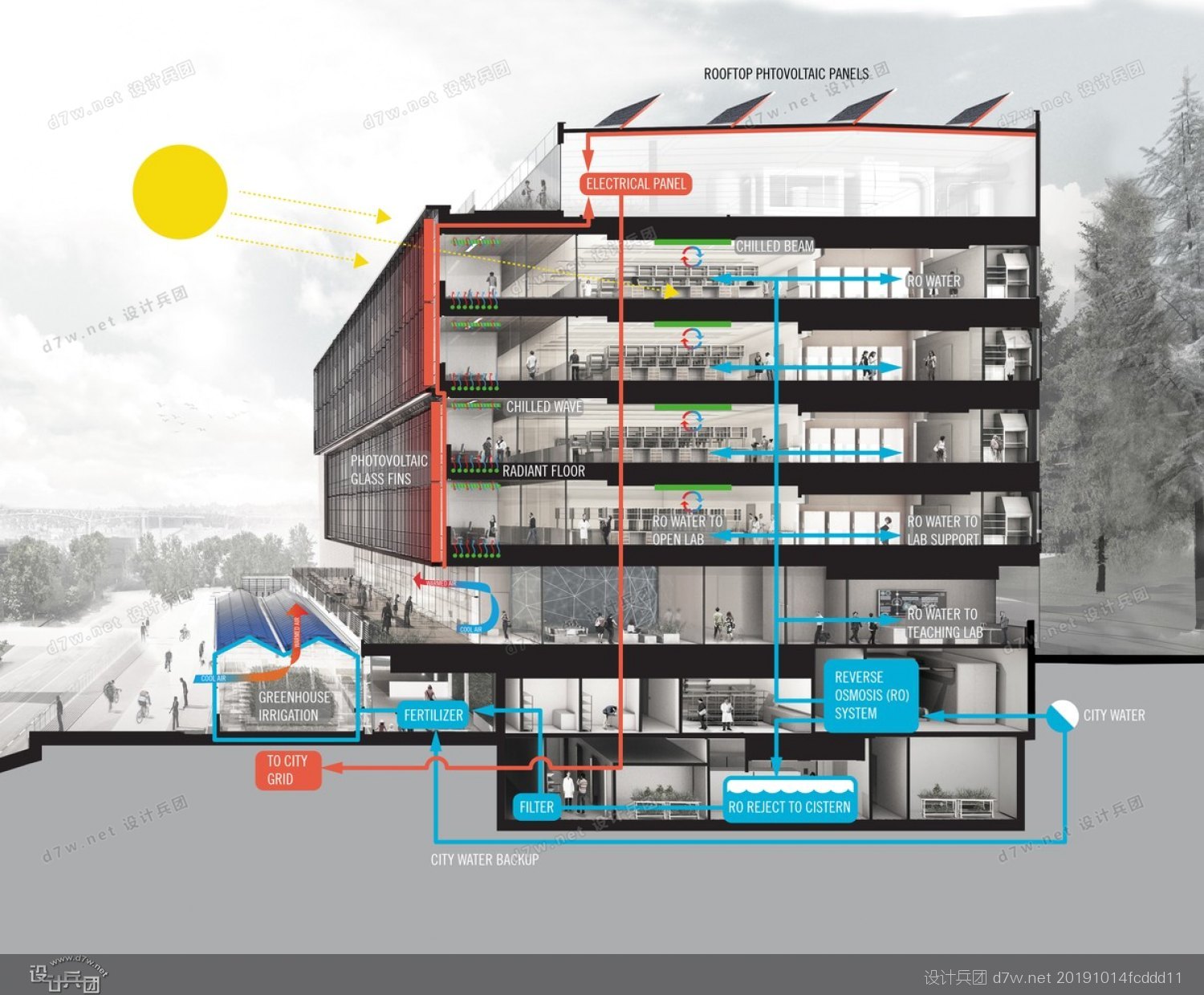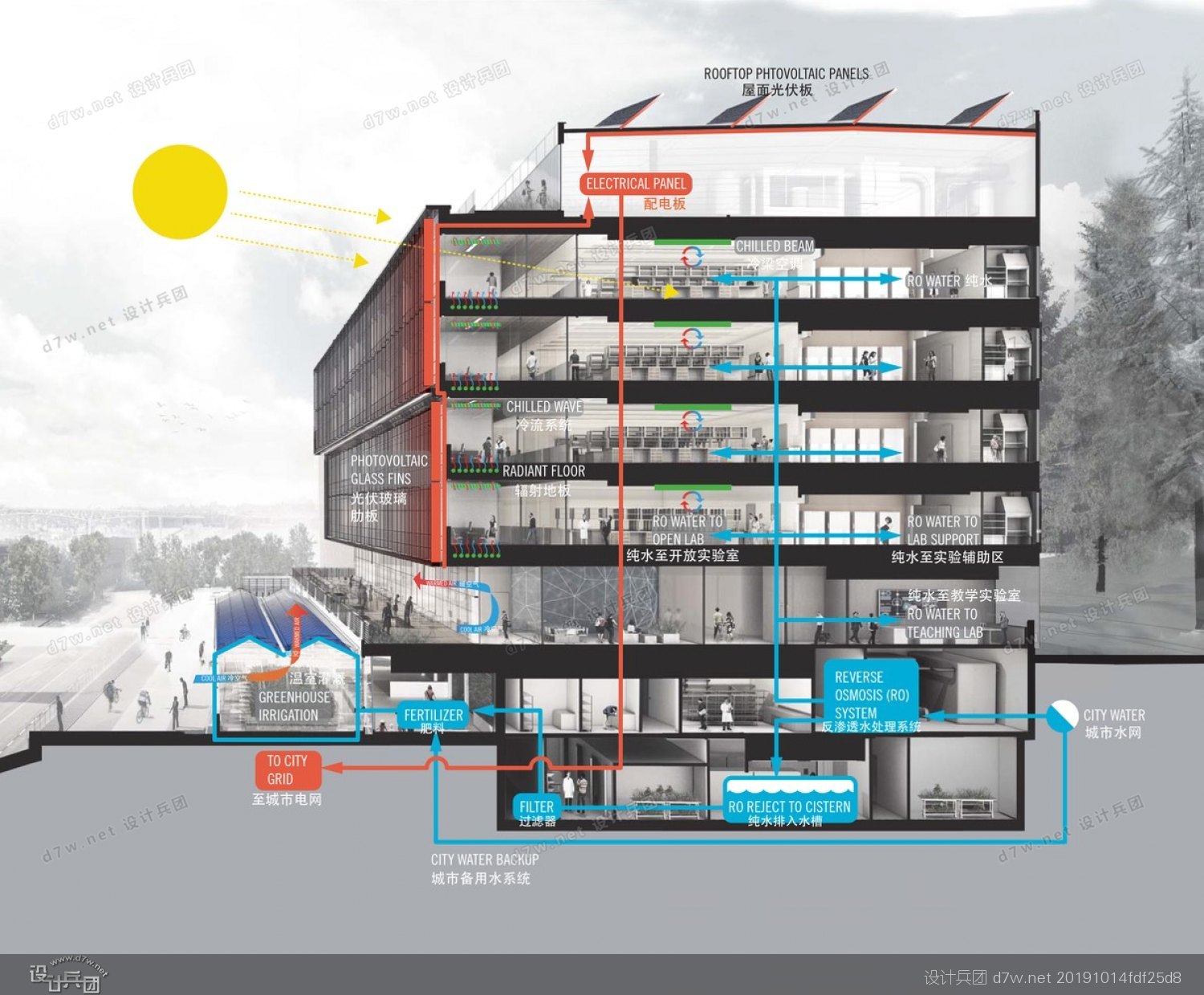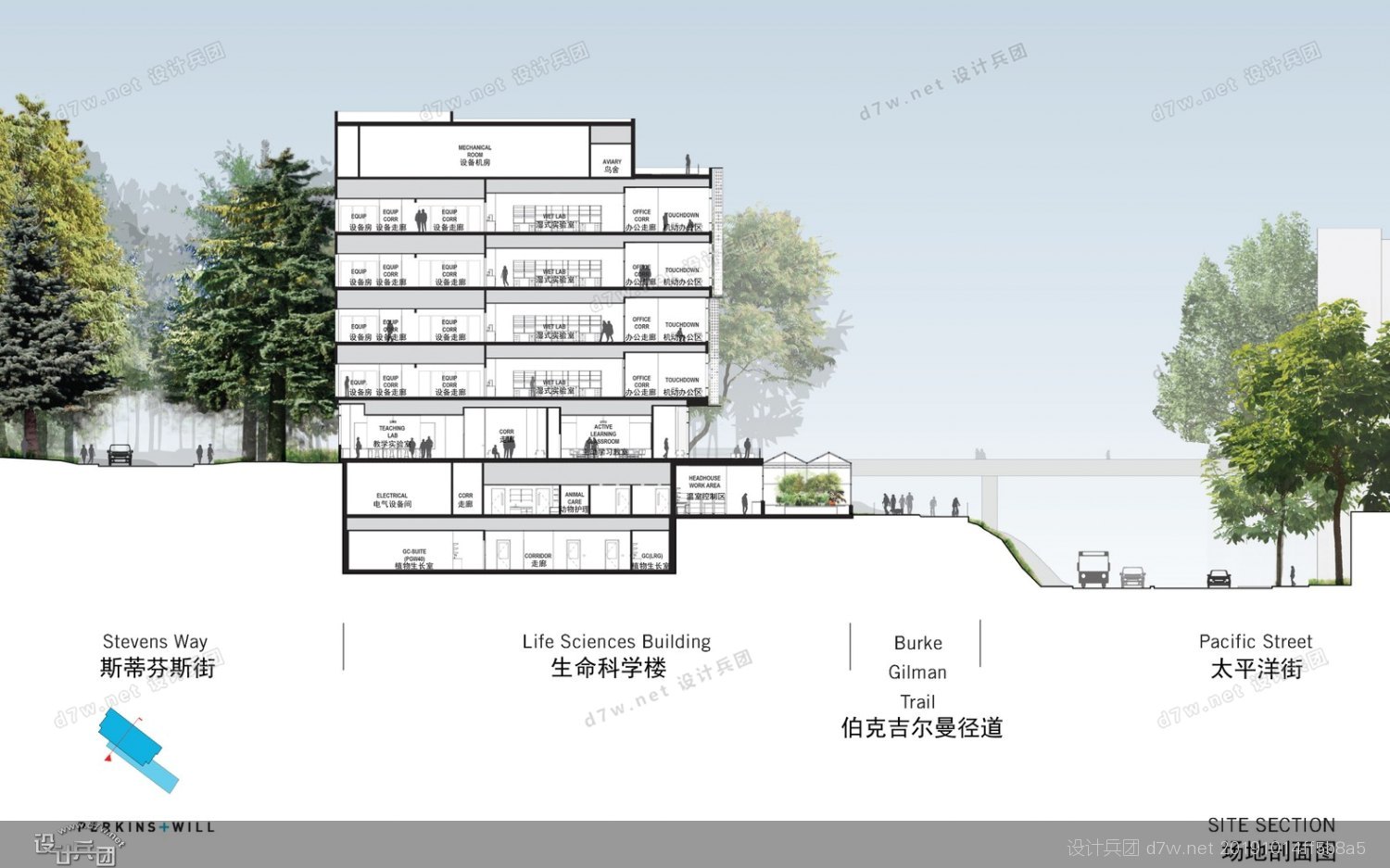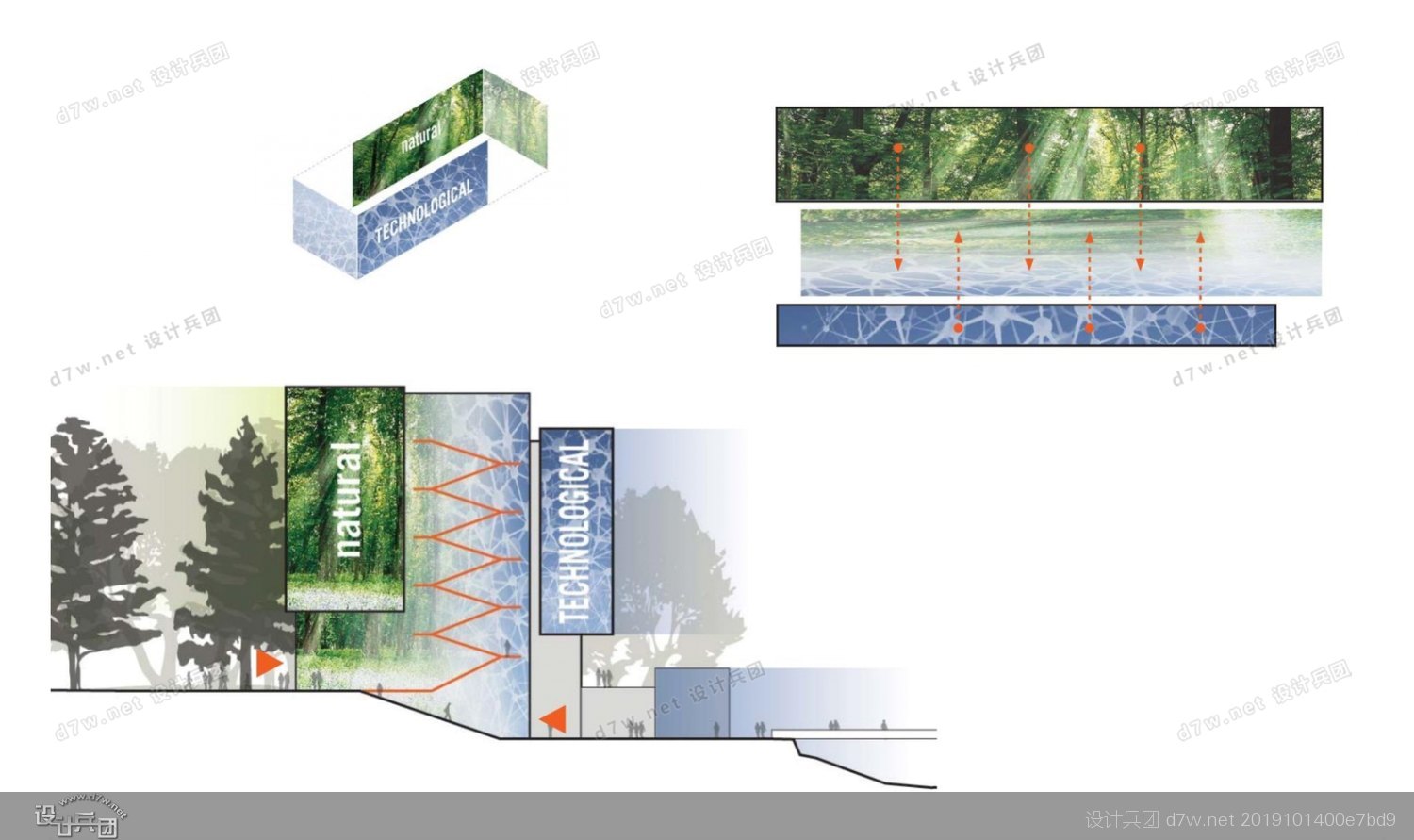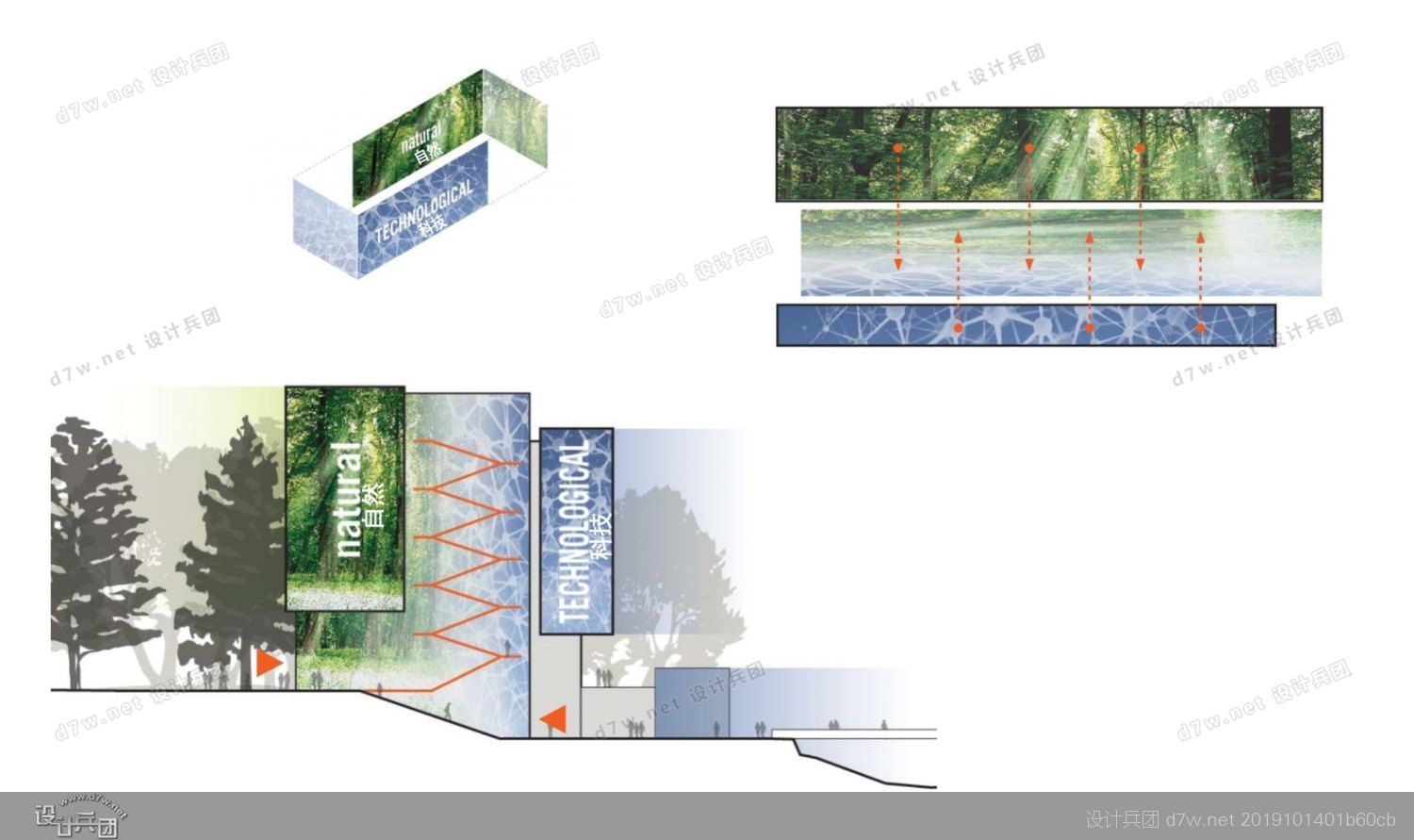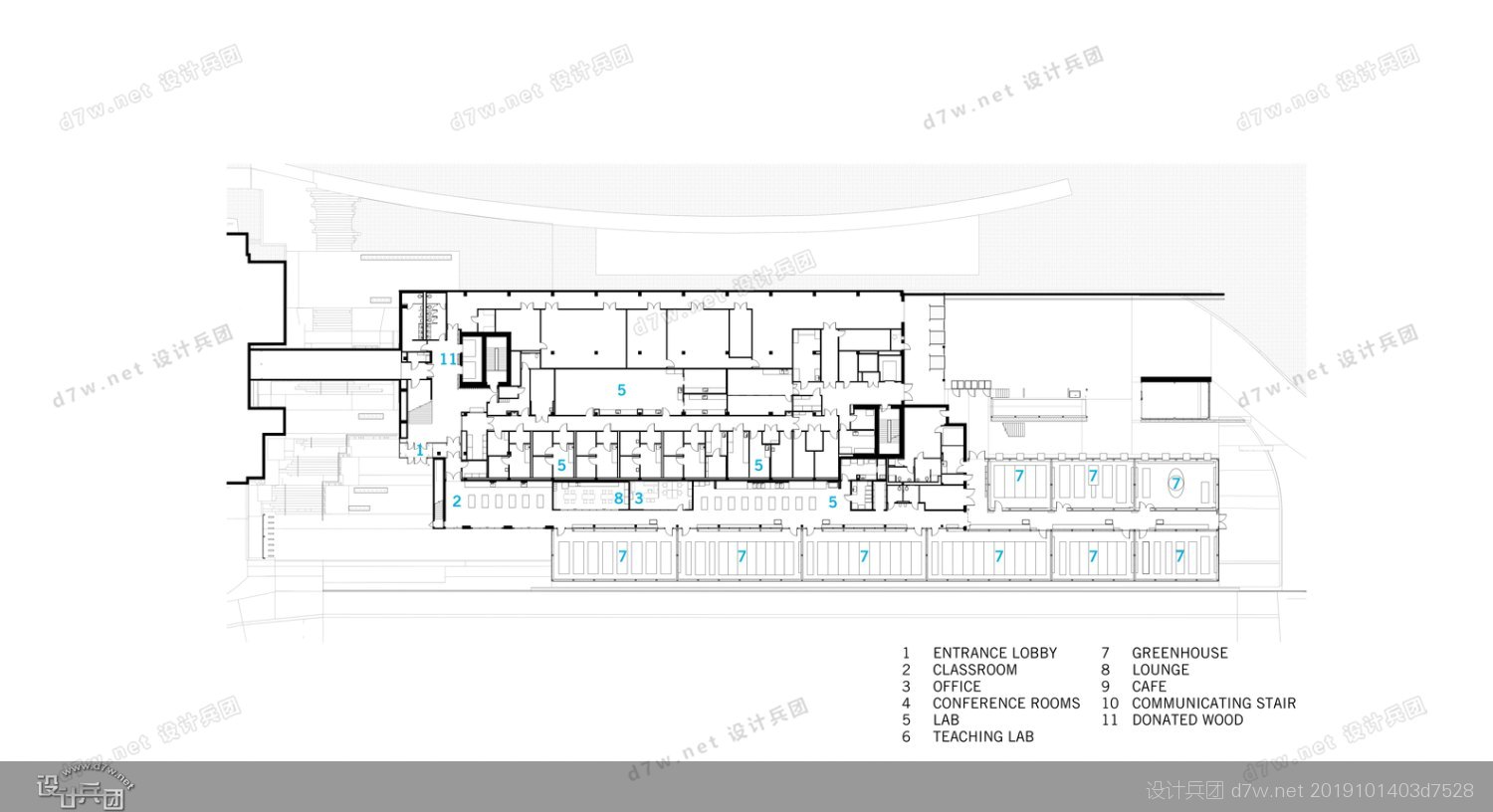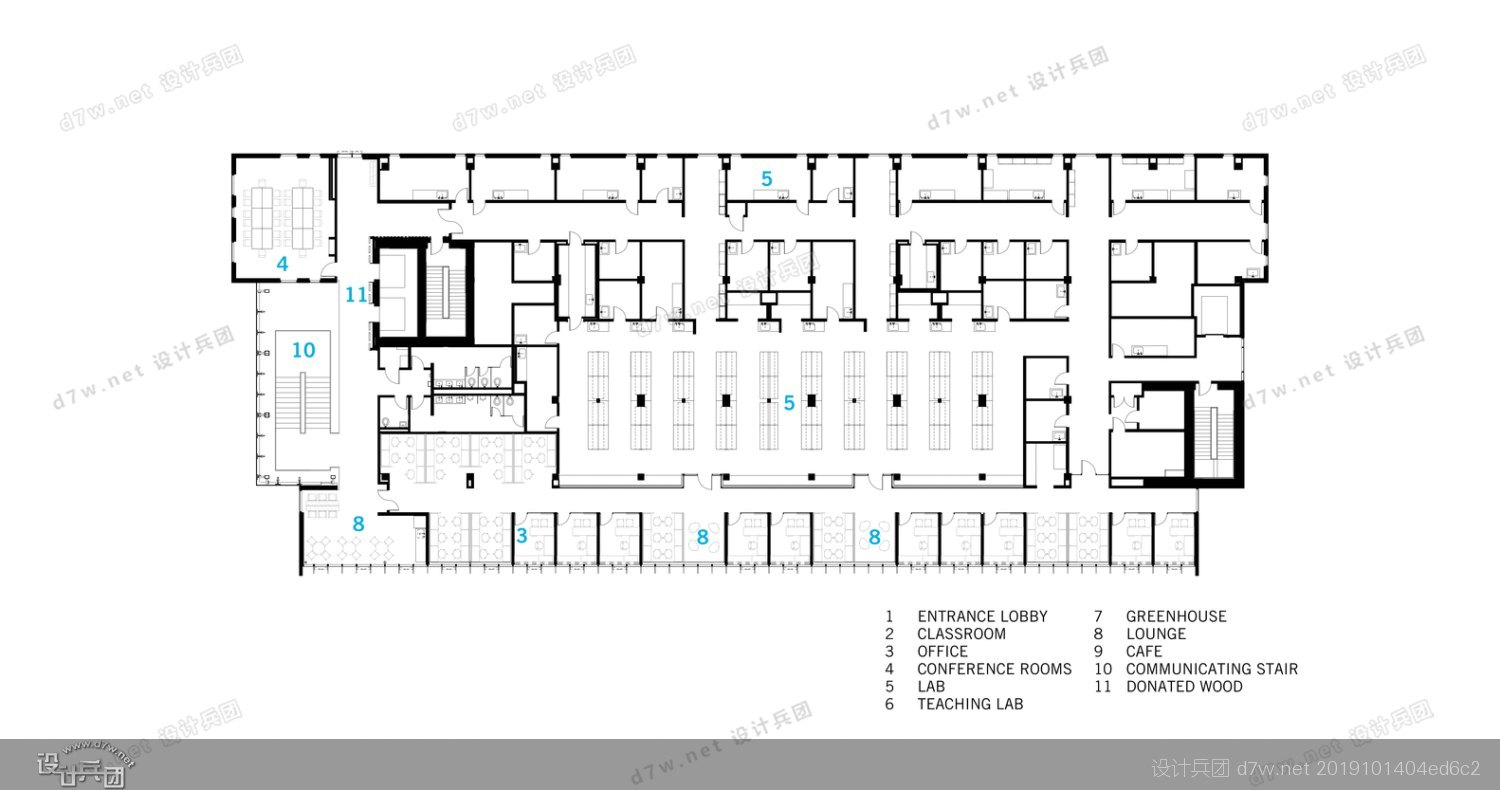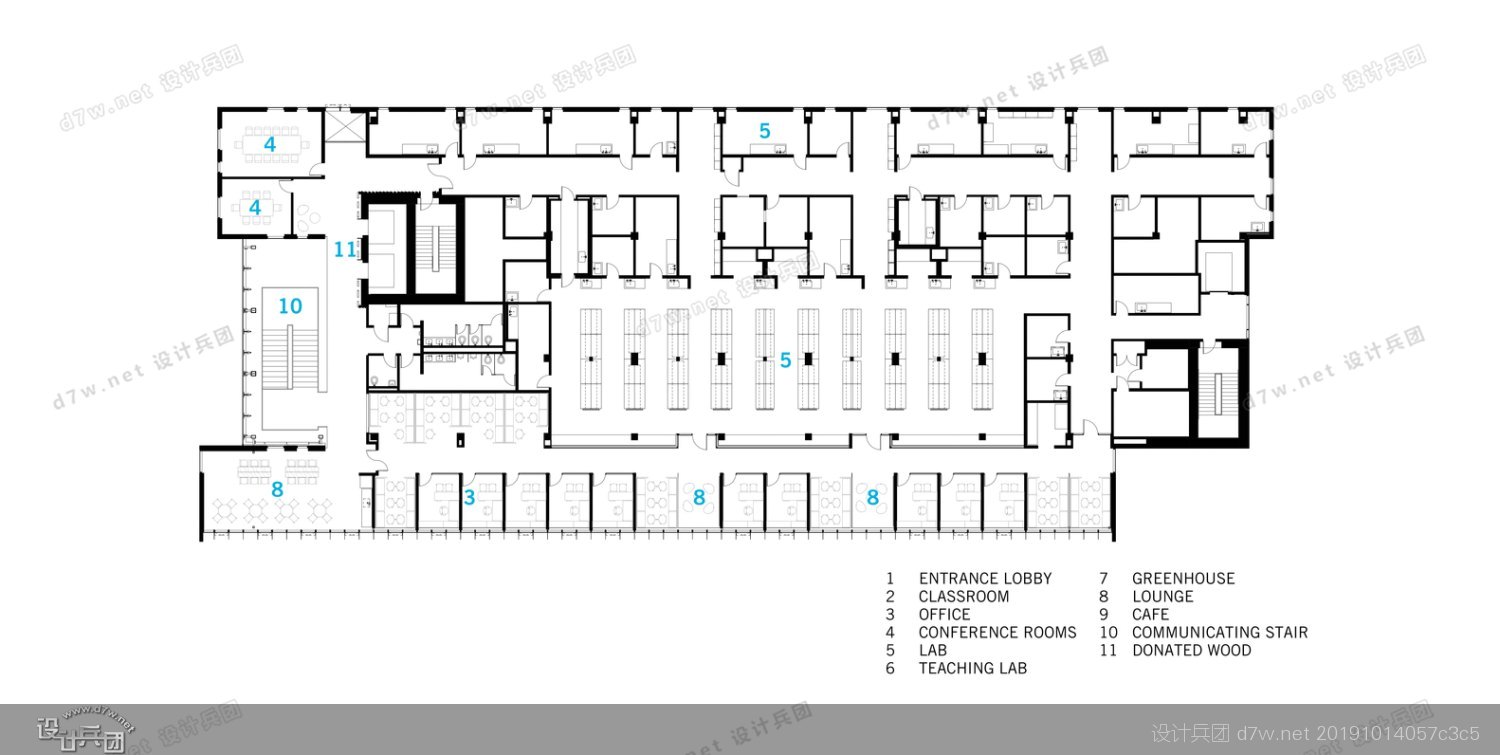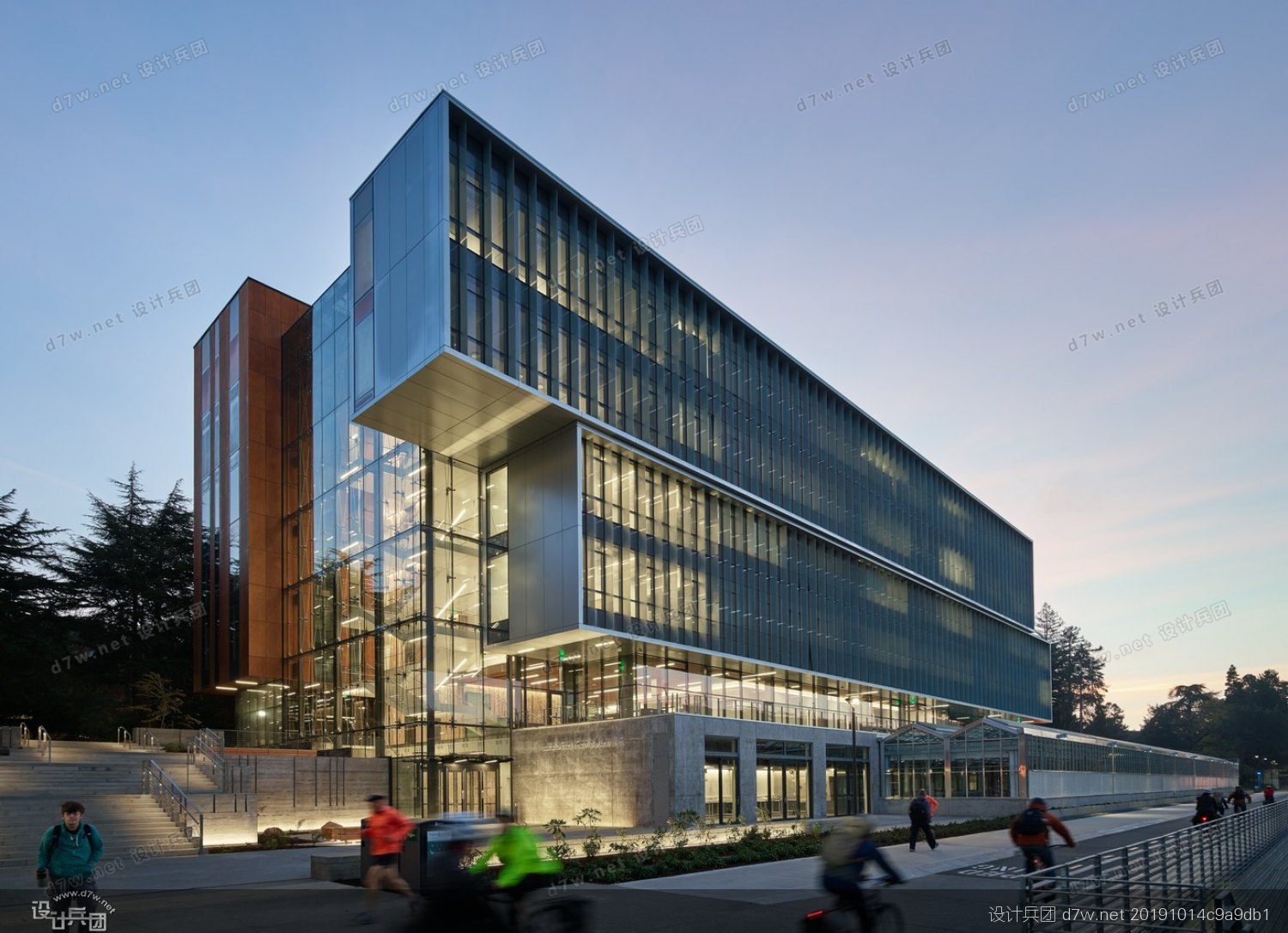
建筑师:珀金斯 威尔
面积:19230.0 平方米
年份:2018年
地点:美国华盛顿州西雅图市史蒂文斯大道3745号
制造商:Parklex International SL,水磨石和大理石,Novum Structures
摄影作品:凯文·斯科特
The University of Washington recently opened the new gateway to the life sciences on its Seattle campus with a state-of-the-art building created for the next generation of research, teaching, and public outreach. Designed by global architecture and design firm Perkins Will, the highly innovative and sustainable Life Sciences Building (LSB), including a 20,000 square-foot greenhouse, creates a new centerpiece for UW Biology. Home to the largest undergraduate major on campus, UW Biology educates more STEM students than any other program in the state.
“Perkins Will’s design of the Life Sciences Building will help us achieve our vision for the future of biology at the UW,” said Steve Majeski, associate dean with the College of Arts and Sciences at the UW. “Much more than a building, the LSB provides the facilities and structure to enable innovative and collaborative cutting-edge research and act as a hub for student discovery, transforming the way we teach the next generation of scientists with spaces for collaboration among students, faculty, and staff.”
Designed for team-focused collaboration, offices, laboratories, and common-use spaces are placed in close proximity to each other. Open, modular and flexible research and teaching areas are designed to be able to adapt to emerging research questions that require novel methods and new instruments. To encourage impromptu encounters, the interior features a suspended staircase with oversized landing areas; the exterior features a courtyard with cascading stairs and reclaimed wood benches along with a rooftop deck with seating adjacent to a cafe.
“Biology takes an integrative approach to understand the natural world,” said Devin Kleiner, project architect and senior associate with Perkins Will. “Inspired by that philosophy, the design combines elements of nature as the visual focal points with innovative and sustainable design features.”
One of the design’s most unique elements is the elevator core, wrapped in custom-milled slabs from 200-foot Douglas fir trees. Designed to mimic the way the trees appeared in the woods, the wide base of the trees on the first floor progressively narrows and tapers as it rises to the floors above. The nine trees from a forest in the Olympic Peninsula were donated by Leopold-Freeman Forests, LLC, as part of Scott and Susan Freeman’s watershed restoration efforts described in the book Saving Tarboo Creek.
Tracking to LEED Gold, the building’s highly innovative sustainable design was a result of a unique collaboration between designers and students from UW Solar, who helped analyze features, write grants, and give presentations. LSB boasts the first-of-its-kind installation of vertical glass solar fins on its exterior, one that is anticipated to generate enough electricity to light more than 12,400 square feet of offices throughout the year. Other sustainable features include operable windows for natural ventilation cooling, chilled beams and waves, a water reclamation system for greenhouse irrigation, radiant floors and rooftop solar panels. Students and visitors can learn about the research conducted within the building as well as real-time information about the building’s energy and water usage from a touchscreen dashboard on the first floor.
In close proximity to the city’s largest commuter trail, the Burke Gilman, LSB offers a range of public amenities, including eventual access to the greenhouse with 3,400 species of plants, the largest teaching collection in the state; a 90-foot-long art wall by Seattle artist Claude Zervas; public bike racks, a café and indoor/outdoor seating.
华盛顿大学最近在其西雅图校园内开设了通往生命科学的新门户,该大楼拥有一幢最先进的建筑,专门用于下一代研究,教学和公众宣传。由全球建筑和设计公司Perkins Will设计的,高度创新和可持续发展的生命科学大楼(LSB),包括一个20,000平方英尺的温室,为UW Biology创造了新的核心。威斯康星大学生物学系是校园内规模最大的本科专业的所在地,与该州任何其他课程相比,它所培养的STEM学生人数更多。
“珀金斯 威尔大学生命科学大楼的设计将帮助我们实现对西澳大学生物学未来的愿景,”西澳大学文理学院副院长史蒂夫·马耶斯基(Steve Majeski)说。“ LSB不仅是建筑物,还提供了设施和结构,以实现创新和协作的前沿研究,并成为学生发现的枢纽,从而改变了我们教授下一代科学家的方式,为学生,教职员工提供了协作的空间,以及员工。”
专为以团队为中心的协作而设计,办公室,实验室和常用空间彼此靠近放置。开放,模块化和灵活的研究与教学领域旨在适应需要新方法和新手段的新兴研究问题。为了鼓励即兴的相遇,室内设有一个悬吊的楼梯,设有超大的着陆区。外部设有带层叠楼梯和再生木凳的庭院,以及带咖啡厅旁座位的屋顶平台。
Perkins Will的项目架构师和高级合伙人Devin Kleiner说:“生物学采用综合方法来理解自然界。” “受这种哲学的启发,设计将自然元素作为视觉焦点,结合了创新和可持续的设计特征。”
设计中最独特的元素之一是电梯核心,包裹在200英尺的道格拉斯枞树上的定制铣刨板中。设计为模仿树木在树林中的出现方式,一楼的树木宽阔的底部随着其升至上方楼层而逐渐变窄和逐渐变细。Leopold-Freeman Forests,LLC捐赠了奥林匹克半岛一个森林中的9棵树,这是Scott和Susan Freeman在“ 拯救塔布河 ”一书中描述的分水岭修复工作的一部分。
UW Solar的设计师与学生之间的独特合作,使该建筑具有高度创新的可持续设计,该建筑可追溯至LEED Gold,后者帮助分析了特征,撰写了赠款并作了演讲。LSB首次在其外部安装了垂直玻璃太阳能鳍片,预计该鳍片将产生足够的电能,全年可照明超过12,400平方英尺的办公室。其他可持续性特征包括用于自然通风冷却的可操作窗户,冷梁和波浪,用于温室灌溉的水回收系统,辐射地板和屋顶太阳能电池板。学生和访客可以从一楼的触摸屏仪表板上了解有关建筑物内进行的研究以及建筑物能耗和用水量的实时信息。
LSB的伯克·吉尔曼(Burke Gilman)紧邻城市最大的通勤步道,提供一系列公共设施,包括最终进入温室的3400种植物,这是该州最大的教学馆藏;西雅图艺术家克劳德·泽瓦斯(Claude Zervas)的一堵长90英尺的艺术墙;公共自行车架,咖啡厅和室内/室外座位。
